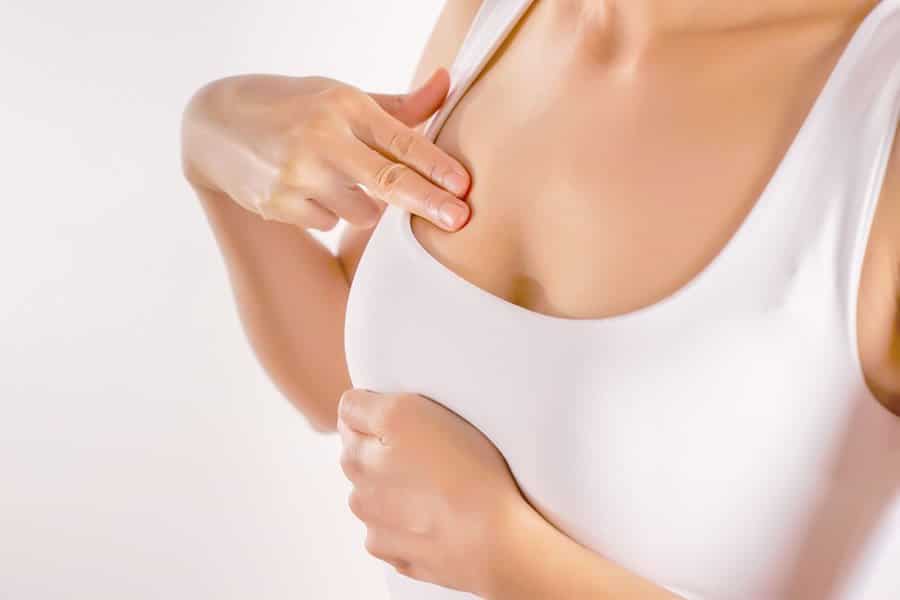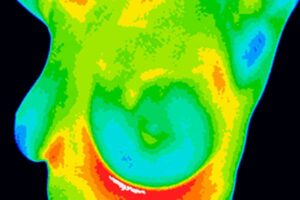In Honor of Breast Cancer Awareness Month
In the 1950’s the breast cancer rate was 1 out of 20, and now it is 1 out of 8.
I get the idea from patients I see that women today have gotten the message that early detection is the only solution to breast cancer. It is accomplished by regular self-breast examinations, having an annual well woman examination and a yearly mammogram.
While these may be good things to do, what about information for a more pro-active approach that helps maintain breast health and keeps the detection of negative results as low as possible.
What if you want more information on natural ways to maintain your breast health that you can do now instead of waiting to see what comes up on the test?
I’ve compiled a list of tips to help women maintain healthy breasts that should support good overall health as well. Here goes:
- Eat a wholesome diet of organic foods as much as possible and drink pure water free of chlorine, fluoride and parasites. Nutrition is a key factor in good health. Organic food does not contain pesticides that are carcinogenic. Avoid refined sugar, refined carbohydrates and trans-fatty acids. Many of our meats are injected with hormones, which affect carcinogenic pathways.
- Drink non-alcoholic beverages. One excellent study demonstrated the fact that alcohol consumption increased hormone levels in the blood. Green Tea is recommend as studies show an overall positive association between drinking green tea and protection against cancer.
- Get regular moderate exercise of at least 4 hours per week. An exciting study from Norway found that women who exercise regularly (four hours per week) had a 37 percent reduction in risk for breast cancer compared to sedentary women. The most likely reason for this is that regular exercise is associated with lower levels of body fat and less total circulating estrogen.
- Consider the un-healthy effects of synthetic oral contraceptives if you are on them.
- Seek natural solutions including Natural Hormone Replacement Therapy – Bioidentical hormones for menopause symptoms. Avoid synthetic Estrogen Replacement Therapy (ERT). One Swedish study of post-menopausal women 55-59 taking ERT for 5 years have a 40% higher risk of developing breast cancer. Among women 60-64, the risk was 70%.
- Don’t smoke cigarettes and avoid second hand smoke. Just a friendly reminder, carcinogenic materials such as heavy metals (i.e., arsenic, beryllium, cadmium, nickel, cobalt) in addition to pesticides, tar and nicotine come from smoking and breathing second hand smoke.
- Avoid radiation that can come in the form of X-rays, the microwave, and even television. Girls who were exposed to radiation in the bombing of Hiroshima during World War II have double the risk of breast cancer.
- Avoid the hidden sources of estrogen in the environment. Excess estrogen in the environment causes feminization of males, PMS symptoms and increased rates of breast cancer.
- Some things in the environment “act like” estrogens when they enter the body. These are called xenoestrogens (xeno means foreign).
- A Dartmouth University study showed that plastic wrap put in vegetable oil and micro waved had 500,000 times the amount of xenoestrogens required to make breast cancer cells grow in a test tube. You don’t want those in your body.
Here’s what to do to avoid them:
- Use ceramics or glass to store or heat food.
- Use natural detergents for dishes and laundry.
- Use body soaps and shampoos from natural sources.
- Avoid pesticides and herbicides.
- Buy hormone free meats. Many of our meats are injected with hormones, which affect carcinogenic pathways
- Avoid synthetic chemicals in clothes, stick to cotton, linen and silk.
- Launder all clothes before wearing them. Go to cleaners that use a chemical free process.
- Use natural skin products without Parabens (Parabens are a group of chemicals widely used as preservatives in food and cosmetic and therapeutic products.) UK studies have found Parabens in breast cancer tumors.
Visit your healthcare practitioner for Breast Cancer Screening & Prevention recommendations. This should consist of:
- EstsronexTM2/16 Test. This measures the ratio of 2 critical estrogens and how the body uses them. “2” is the good guys and “16” is the bad guys. If the ratio is off, it can be brought into alignment with diet and nutritional supplementation.
- Prevention C. These are supplements designed to favorably alter this ratio and decrease the long-term risk of estrogen related breast cancer.
- Digital Infrared Thermography. This safe, comfortable and quick test is an FDA approved screening tool for breast cancer that does not expose you to radiation. Thermography can show significant indicators several months before any of the clinical signs of inflammatory breast disease, skin discoloration, swelling and pain.
Inflammatory breast disease cannot be detected by mammography and is most commonly seen in younger women. This may promote breast disease later in life. - Based on the results of this test, other nutritional recommendations may be made.
Another preventative approach is the simple to take Genovations ™ test. It uses genetic analysis to provide information stored in each person’s genes to reveal disease risks so preventative actions can be taken before the disease manifests. Individualized treatment might consist of possible changes in diet, lifestyle, and nutritional supplements that will most likely improve health.
In addition, understand that the body is programmed to heal itself. As women, we can tap into that biochemical process. This complements and supports all of the above information for total breast health.
You can have healthy breasts.
Related Conditions and Therapies
Breast Health Issues
Thermography
Helpful Resources for Women
- Women's Health Care - a page dedicated to treating issues for women.




